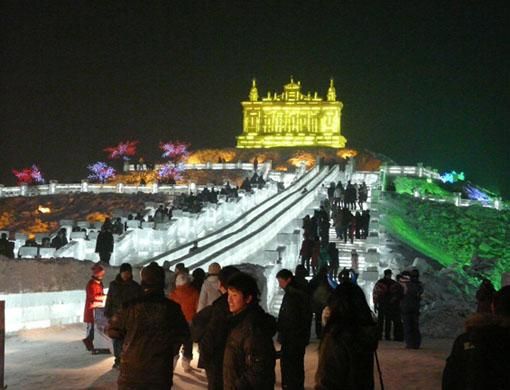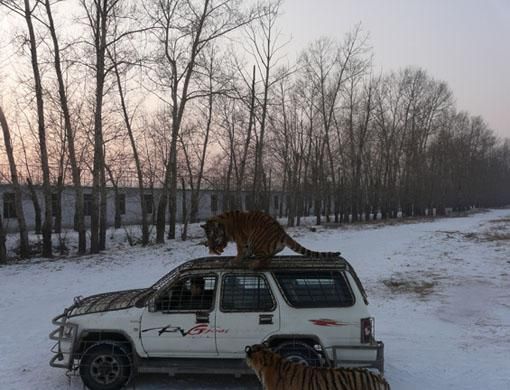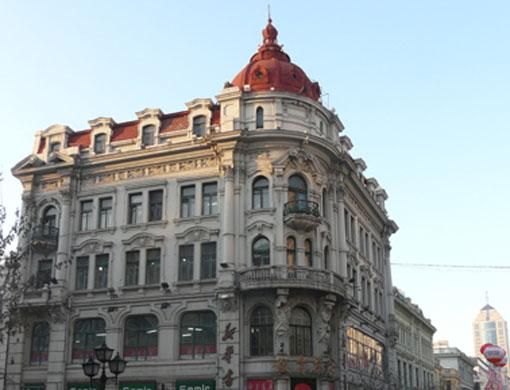Like Quebec City and Reykjavik, Harbin in China, is one of those cities that are best visited in the peak of winter, from November through March, when the streets are covered in snow. With the first signs of frost, the people of the city begin work — and transform it into a winter wonderland.
Enter Harbin
A two- or three-day visit is enough to take in the sights of Harbin.
The city can be reached from Beijing by air (less than two hours, for 960 yuan or Dh516 by Air China) or train (8-14 hours, for 300 yuan or Dh161 for a hard sleeper ticket).
From the airport, Harbin looks like any other Chinese city — bustling with people and chaotic traffic, full of malls and skyscrapers. But the capital of Heilongjiang Province is just a few hundred kilometres away from Russia. The close ties this city shares with China's northern neighbour are reflected in its architecture.
The best examples of Harbin's Baroque and Byzantine façades can be seen in Zhongyang Dajie, a 1.4-kilometre pedestrian-only street that ends at the south bank of the Songhua River, which is transformed into an ice rink in winter.
Staying there
The only five-star hotels you will find in Harbin are the Shangri-La Hotel, Harbin (1,000 yuan or Dh537 per night) and the Sofitel Harbin (1,200 yuan or Dh645 per night).
The Shangri-La is a better option. Besides, there are plenty of budget-friendly accommodations in Zhongyang Dajie.
In winter, ice sculptures decorate this street — a replica of Rodin's The Thinker, a working piano, carvings of Chinese zodiac animals and many more.
There are several Chinese stores in Harbin, besides those selling Russian goods. At the northern end of Zhongyang Dajie, on the west side of the street, is Fur City, which offers the greatest variety and the best deals on hats, coats and stoles.
Across the Songhua River (and a taxi ride for around 40 yuan or Dh21) is the Siberian Tiger Park. For 65 yuan (Dh34), you can take a ride through the park, where tigers roam in large fenced-in areas.
For an additional fee, you can even buy a staged National Geographic moment. The park will bring out live prey — chickens, goats or even a cow — for the tigers to devour. The park closes at 4pm.
Cool ride
From the Siberian Tiger Park (for a taxi ride of 20 yuan or Dh10), you can reach Taiyang Dao (Sun Island). This is where two of Harbin's greatest attractions are located — the Snow Sculpture Fair and the Ice and Snow World.
The Snow Sculpture Fair is the more subdued and artistic of the two and has many snow carvings, most of which are about 15 feet tall.
The Ice and Snow World, located just across the street, has a much more whimsical feel to it. Buddhist temples, medieval castles and the Harbin skyline have all been sculpted in ice — and illuminated. It also has giant ice slides, an ice-skating rink and a couple of cafés — enough to keep visitors busy for at least an hour or two.
The frigid weather will most likely discourage you from exploring the eateries offering mouth-watering cuisine. Not to worry.
All the must-eats for a visitor can be found right there, in Zhongyang Dajie.
Visit the Russian Café for some terrific beef stew and hot drinks; try Lao Chang Chun Bing for chun bing — thin pancakes stuffed with eggs, meat or vegetables.
Try Dongfang Jiaozi Wang for dumplings and a noodle dish called yangshilapi.
Mixed bag
Visit the Blue International Club in the evening. Located on Diduan Jie, it is packed with an eclectic mix of Chinese, Russians, Europeans and North Americans. If you get there before the dancefloor opens, you'll be treated to a performance that can only be described as a classic blend of cultures.
Another must-visit is the St Sophia Cathedral, which is just a 15-minute walk from Zhongyang Dajie. It is located at the intersection of Zhaolin and Toulong streets.
Although it is not well-preserved on the inside, the place is still worth a visit.
On the exterior, St Sophia is a striking example of a Byzantine church.
But when you pay the admission fee (15 yuan or Dh8) and walk inside, the first thing you will notice is a gift shop that has little to do with the religious or architectural tradition of the place.
Watches, binoculars, kachina dolls and toys featuring the mascot of the 2008 Beijing Olympics are among the items crammed into the apse of the church.
The cathedral has been poorly maintained on the inside. Paint peels off the walls and paintings of The Last Supper and the authors of the Christian gospels hang in frames as stand-ins for the original art that once adorned them.
— Maggie Rauch is a freelance writer based in China
Spectacular city of ice
Spectacular city of ice









